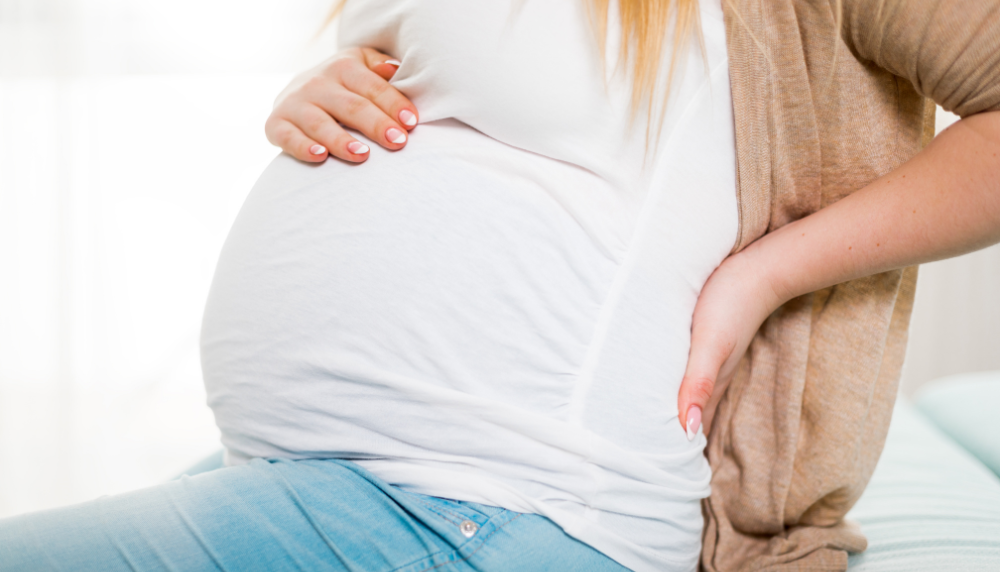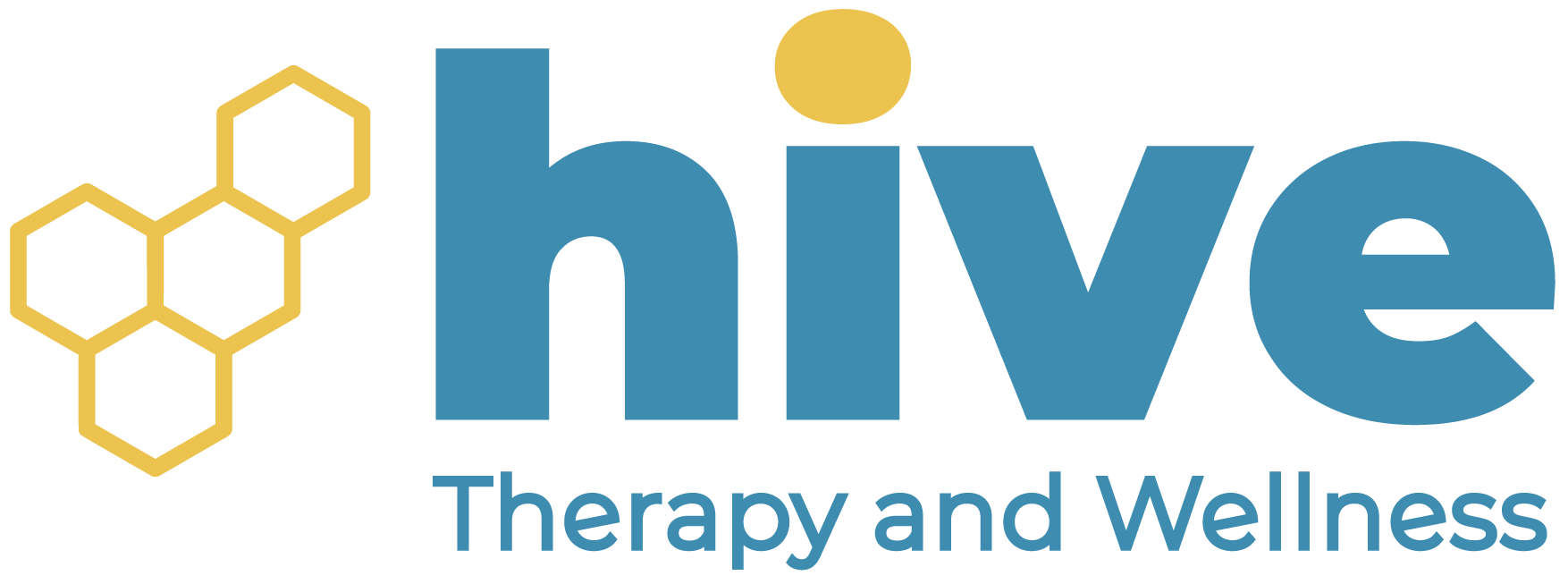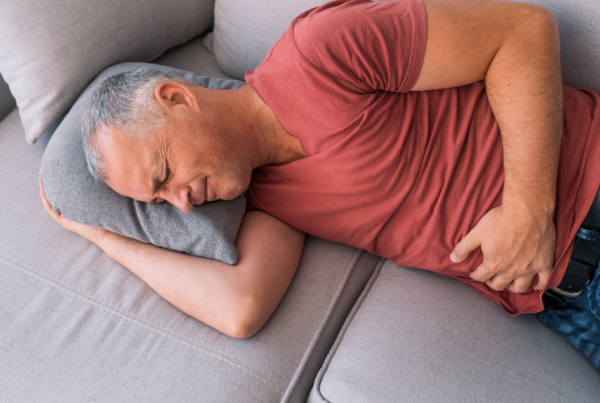Lower Back Pain
Move Better. Live Fuller. Your Wellness Journey Starts Here.
Schedule a FREE Discovery Call!
About Lower Back Pain
Lower back pain is a very common condition characterized by pain, stiffness, or spasms in the lower back. It affects the lumbar region, which is located below the chest and above the pelvis. Depending on the cause, lower back pain may radiate to other areas such as the hips, pelvis, or thighs.
The lower back connects the spine to the pelvis and plays a key role in supporting and stabilizing the body. Because it bears the weight of the upper body and rib cage while also absorbing forces from both above and below, it is subject to significant movement, stress, and strain. Together with the surrounding core muscles, the lower back acts as a central hub for balance, stability, and power during dynamic movement.

Due to the fact that the lower back supports a lot of weight and is involved in practically any movement, it is very prone to pain and other problems. Lower back pain can range widely, causing anything from mild discomfort to debilitating pain. Additionally, problems with this area of the body can create stiffness and trouble with movement or activities. For example, you may find it difficult to bend over or stand up from a sitting position due to lower back pain. It may affect your posture, and create pain in other areas of your body as they compensate for your poor posture.
Lower back pain can be acute (temporary) or chronic (long-lasting). The intensity of your pain may vary and worsen with movement or certain positions. Lower back pain may come and go, or be constant. All of these factors will vary based on the cause of your lower back pain, which we’ll discuss next!
What Causes Lower Back Pain?
Lower back pain can have many different causes, many of which are musculoskeletal-related causes that can be addressed with physical therapy. This can include things like strains, misalignment, or injury to the muscles or tendons in the lower back area. In other cases, certain conditions such as arthritis or herniated discs can cause pain. Regardless, anyone can achieve a much better quality of life while living with these conditions thanks to physical therapy.
Below, we’ve outlined some common causes of lower back pain that can be addressed by physical therapy:
Injury
One common cause of lower back pain is injury. Overuse injuries, falls, trauma, sprains, fractures, and similar incidents can create significant back pain. These injuries can be caused or worsened by poor posture, poor form during exercise or sports, accidents, and other causes like core weakness, pelvic floor dysfunction, and more. In some cases, such as with minor incidents, this pain can be temporary, but for significant injuries it is essential to work with a physical therapist to regain proper function and mobility of your lower back.
Core Dysfunction
The core is an essential part of your body that allows for stability, balance, and movement. It works with the lower back to support your upper body and allow for many different activities—anything from leisurely walking to extreme sports. Weakness or a lack of coordination in your core can significantly affect the lumbar area, as it puts more pressure and strain on those muscles to compensate.
When we talk about the “core,” we’re referring to more than just the abdominal muscles. The core includes a group of muscles located at the front, back, and sides of the torso. It works closely with other key areas like the hips, shoulders, and pelvic floor to support posture and everyday movement. For your body to move well and stay supported, all of these regions need to be strong, coordinated, and functioning.
Imbalances in the core such as weakness or tightness can place strain on the muscles, ligaments, tendons, bones, discs, and nerves that support the lower back. When these tissues are imbalanced, they can limit mobility and create tension, which may lead to discomfort or pain over time.
Many things can cause weakness or tightness in the low back region, such as prolonged sitting or standing, poor posture, poor lifting or breathing techniques, and repetitive movements.
Pelvic Floor Dysfunction
Pelvic floor dysfunction, like core dysfunction, can lead to strain and pain in the lower back because of how interconnected these regions are. The pelvic floor plays a crucial role in supporting the spine and hips by providing stability to the base of the core. It also contributes to continence, supports pelvic organs, enhances sexual function, and helps with circulation—making it an essential component of overall core and lower back health.
The pelvic floor consists of 26 muscles. When these muscles are too tight, weak, or uncoordinated, it can create a variety of problems for your lower back. These muscle dysfunctions prevent the pelvic floor from performing as it should, creating misalignment, strain, and pressure dysregulation in the lumbar spine and pelvis.
For example: Overactive, tight pelvic floor muscles can disrupt mobility and posture, causing restriction and stiffness. Weak pelvic floor muscles fail to provide ample support, creating instability and strain on the lower back. Pelvic floor dysfunction directly impacts core function, and therefore pelvic health should not be ignored when treating lower back pain.
Pregnancy and Childbirth
Individuals with a uterus are more likely to experience lower back pain for a variety of reasons. There are many conditions of the uterus and other related organs that can contribute to lower back pain, and individuals who choose to become pregnant are very likely to experience lower back pain during pregnancy or in postpartum.
During pregnancy, your body undergoes natural changes like a forward shift in your center of gravity, an increased lumbar curve, greater pelvic tilt, and widespread ligament laxity. While these changes are normal, they can place extra stress on the lower back and pelvis. As posture and pelvic alignment shift, the body may begin to over-rely on the lower back for support, increasing the risk of discomfort or pain.
The act of childbirth that results in trauma and the healing period afterwards significantly affects your abdominal muscles, bony pelvis, and pelvic floor muscles. These stretched, tight, injured, or potentially weakened muscles may fail to provide sufficient support for the lower back, creating stress and pain.
Pre-Existing Conditions
Lastly, there are many pre-existing conditions that may cause your lower back pain. Certain conditions are directly tied to spine function and health, whereas others may indirectly create pain due to proximity, core dysfunction, or pelvic floor dysfunction. Lower back pain can be caused by conditions that involve structural issues, irritated nerves, muscle strain, referred pain, and more. Some examples include:
- Sciatica
- Scoliosis
- Spondylolisthesis
- Arthritis / osteoarthritis
- Herniated discs
- Fibromyalgia
- Endometriosis
- Sacroiliac joint dysfunction
- Joint inflammation
- And more
Physical Therapy for Lower Back Pain
The providers at Hive Therapy and Wellness understand that lower back pain can result from many different causes—often a combination of many factors involving multiple areas and structures such as the bones and discs of the spine, the core, and the pelvic floor musculature. Their treatment approach involves curating a comprehensive and holistic plan of care for each patient. Rest assured that your plan is curated to your individual needs, and will involve many different treatment methods that aim to relieve pain, restore function, and enhance comfort.
Your physical therapist will begin with a thorough evaluation by discussing your medical history, such as current conditions, previous injuries, and relevant surgeries. Next, they will perform a physical examination to identify the root causes of your pain. Using their findings from your evaluation and examination, your physical therapist will formulate a curated care plan which may include a variety of treatment methods that vary based on your unique needs.
Some examples of treatments used to address lower back pain at Hive Therapy and Wellness include:
Pain Management
Although your Hive physical therapist will provide treatment to address the root cause of your back pain, they can also provide pain-relieving treatments as needed. For back pain caused by injuries, this can include modalities such as temperature therapy or electrical stimulation. In most cases, pain relief can be provided through a variety of manual therapies, which enhance muscle and nerve function.
Some examples of manual therapies provided at Hive include hands-on techniques, cupping, tissue scraping, and dry needling. Certain manual therapies can even be performed to address restrictive scar tissue, such as from previous injuries or surgeries to the pelvis, back, or abdominals.
If your lower back pain is caused or worsened by pelvic floor dysfunction, your physical therapist may perform manual therapies suited to the pelvis or pelvic floor. In some cases, this can include internal techniques that will release muscle tension, improve function, and allow for better pelvic floor mobility.
Core Strengthening
As mentioned earlier, core strength is very important for lower back health. Your physical therapist will work to improve your core health in terms of stability, strength, balance, coordination, and flexibility.
To improve these aspects of core health, your physical therapist will create an exercise plan to target weakened muscle groups and encourage coordination. You can expect to practice exercises that will help you coordinate your core and pelvic floor properly to reduce strain on the lumbar area.
Your physical therapist will be sure to correct any problems with your form and posture, so that you can exercise safely and without further injury. You’ll engage in stretching exercises to reduce muscle tightness, improve flexibility, and enhance mobility.
Pelvic Floor Training
Similarly to core strengthening, your pelvic floor will need care as well. In order to properly support the core and lower back, your pelvic floor muscles need to be strong and coordinated with other muscle groups. To address your pelvic floor health, your physical therapist will start by examining this important muscle group and identifying any weakness, tightness, trigger points, and so on.
To address any dysfunctions of the pelvic floor, your physical therapist will provide treatments that allow you to better activate and control your pelvic floor. By becoming more familiar with these muscles and regaining control over them, you will be able to practice relaxation and strengthening exercises designed especially for the pelvic floor!
These treatments will improve the health and function of your pelvic floor muscles, and allow them to better support your lower back and overall stability.
Behavioral Modifications
There are many behaviors that can contribute to lower back pain; particularly postures, movement mechanics, or aspects pertaining to pelvic floor health. These can vary from person to person, but your physical therapist will be sure to educate you on common behaviors that can contribute to lower back pain.
For example, individuals who do a lot of lifting at work or home will want to have their physical therapist correct their lifting technique. Or, individuals who work at an office or desk for extended periods of time can gain very valuable information from their physical therapist on posture and ergonomics.
Additionally, there are many restroom habits that individuals may be performing frequently—not realizing that it could indirectly contribute to their lower back pain. Certain habits like frequent straining, prolonged sitting on the toilet, holding urine too long, and other habits can contribute to poor pelvic floor health. If your behaviors result in pelvic floor dysfunction, this can affect your lumbar health.
Spinal Manipulation and Joint Mobilization
Spinal manipulation will be a necessary treatment for many, as spinal or pelvic misalignment can be a major contributor to lower back pain. Misalignment can result in overcompensation for the back, hips, or pelvis, which can affect lower back health or cause referred pain. To correct any of these problems, your physical therapist may perform spinal manipulations or joint mobilizations as necessary.
These treatments can relieve strain on the lower back and improve overall mobility. Spinal manipulation and joint mobilization treatments can provide a better range of motion for joints and better activation of muscles, enhancing your mobility and comfort.
At Home Care
The providers at Hive Therapy and Wellness are dedicated to providing holistic treatment. Therefore, they will be sure to provide you with the knowledge and tools necessary to support good lumbar health at home, too. This can include aspects such as:
- Stretches and exercises to continue at home.
- Behavioral modifications to maintain good posture and pelvic floor health.
- Strategies or tool recommendations for self-managing pain.
- Modifications to activities or home environments that may contribute to lower back pain.
By addressing aspects of core weakness, pelvic floor function, spinal alignment, and other factors, Hive’s therapists can provide a treatment plan that not only relieves lower back pain, but also provides patients with the education, resources, and tools necessary to support long-term health. To provide this comprehensive treatment experience, your physical therapist may utilize any of the following treatments in your care plan:
- Neuromuscular re-education
- Manual therapy
- Exercise prescription
- Dry needling
- Cupping
- Tissue scraping
- Behavioral modifications
- Therapeutic activities
- Electrical muscle stimulation
- Spinal manipulation
- Therapeutic modalities
- Biofeedback
Lower back pain is a very common condition characterized by pain, stiffness, or spasms in the lower back.
It affects the lumbar region, which is located below the chest and above the pelvis. Depending on the cause, lower back pain may radiate to other areas such as the hips, pelvis, or thighs.
The lower back connects the spine to the pelvis and plays a key role in supporting and stabilizing the body. Because it bears the weight of the upper body and rib cage while also absorbing forces from both above and below, it is subject to significant movement, stress, and strain.
Together with the surrounding core muscles, the lower back acts as a central hub for balance, stability, and power during dynamic movement.
Due to the fact that the lower back supports a lot of weight and is involved in practically any movement, it is very prone to pain and other problems. Lower back pain can range widely, causing anything from mild discomfort to debilitating pain.
Additionally, problems with this area of the body can create stiffness and trouble with movement or activities. For example, you may find it difficult to bend over or stand up from a sitting position due to lower back pain.
It may affect your posture, and create pain in other areas of your body as they compensate for your poor posture.
Lower back pain can be acute (temporary) or chronic (long-lasting). The intensity of your pain may vary and worsen with movement or certain positions. Lower back pain may come and go, or be constant.
All of these factors will vary based on the cause of your lower back pain, which we’ll discuss next!
Lower back pain can have many different causes, many of which are musculoskeletal-related causes that can be addressed with physical therapy. This can include things like strains, misalignment, or injury to the muscles or tendons in the lower back area.
In other cases, certain conditions such as arthritis or herniated discs can cause pain. Regardless, anyone can achieve a much better quality of life while living with these conditions thanks to physical therapy.
Below, we’ve outlined some common causes of lower back pain that can be addressed by physical therapy:
Injury
One common cause of lower back pain is injury. Overuse injuries, falls, trauma, sprains, fractures, and similar incidents can create significant back pain.
These injuries can be caused or worsened by poor posture, poor form during exercise or sports, accidents, and other causes like core weakness, pelvic floor dysfunction, and more.
In some cases, such as with minor incidents, this pain can be temporary, but for significant injuries it is essential to work with a physical therapist to regain proper function and mobility of your lower back.
Core Dysfunction
The core is an essential part of your body that allows for stability, balance, and movement. It works with the lower back to support your upper body and allow for many different activities—anything from leisurely walking to extreme sports.
Weakness or a lack of coordination in your core can significantly affect the lumbar area, as it puts more pressure and strain on those muscles to compensate.
When we talk about the “core,” we’re referring to more than just the abdominal muscles. The core includes a group of muscles located at the front, back, and sides of the torso.
It works closely with other key areas like the hips, shoulders, and pelvic floor to support posture and everyday movement. For your body to move well and stay supported, all of these regions need to be strong, coordinated, and functioning.
Imbalances in the core such as weakness or tightness can place strain on the muscles, ligaments, tendons, bones, discs, and nerves that support the lower back. When these tissues are imbalanced, they can limit mobility and create tension, which may lead to discomfort or pain over time.
Many things can cause weakness or tightness in the low back region, such as prolonged sitting or standing, poor posture, poor lifting or breathing techniques, and repetitive movements.
Pelvic Floor Dysfunction
Pelvic floor dysfunction, like core dysfunction, can lead to strain and pain in the lower back because of how interconnected these regions are. The pelvic floor plays a crucial role in supporting the spine and hips by providing stability to the base of the core.
It also contributes to continence, supports pelvic organs, enhances sexual function, and helps with circulation—making it an essential component of overall core and lower back health.
The pelvic floor consists of 26 muscles. When these muscles are too tight, weak, or uncoordinated, it can create a variety of problems for your lower back.
These muscle dysfunctions prevent the pelvic floor from performing as it should, creating misalignment, strain, and pressure dysregulation in the lumbar spine and pelvis.
For example: Overactive, tight pelvic floor muscles can disrupt mobility and posture, causing restriction and stiffness. Weak pelvic floor muscles fail to provide ample support, creating instability and strain on the lower back.
Pelvic floor dysfunction directly impacts core function, and therefore pelvic health should not be ignored when treating lower back pain.
Pregnancy and Childbirth
Individuals with a uterus are more likely to experience lower back pain for a variety of reasons. There are many conditions of the uterus and other related organs that can contribute to lower back pain, and individuals who choose to become pregnant are very likely to experience lower back pain during pregnancy or in postpartum.
During pregnancy, your body undergoes natural changes like a forward shift in your center of gravity, an increased lumbar curve, greater pelvic tilt, and widespread ligament laxity.
While these changes are normal, they can place extra stress on the lower back and pelvis. As posture and pelvic alignment shift, the body may begin to over-rely on the lower back for support, increasing the risk of discomfort or pain.
The act of childbirth that results in trauma and the healing period afterwards significantly affects your abdominal muscles, bony pelvis, and pelvic floor muscles.
These stretched, tight, injured, or potentially weakened muscles may fail to provide sufficient support for the lower back, creating stress and pain.
Pre-Existing Conditions
Lastly, there are many pre-existing conditions that may cause your lower back pain. Certain conditions are directly tied to spine function and health, whereas others may indirectly create pain due to proximity, core dysfunction, or pelvic floor dysfunction.
Lower back pain can be caused by conditions that involve structural issues, irritated nerves, muscle strain, referred pain, and more. Some examples include:
- Sciatica
- Scoliosis
- Spondylolisthesis
- Arthritis / osteoarthritis
- Herniated discs
- Fibromyalgia
- Endometriosis
- Sacroiliac joint dysfunction
- Joint inflammation
- And more
The providers at Hive Therapy and Wellness understand that lower back pain can result from many different causes—often a combination of many factors involving multiple areas and structures such as the bones and discs of the spine, the core, and the pelvic floor musculature.
Their treatment approach involves curating a comprehensive and holistic plan of care for each patient.
Rest assured that your plan is curated to your individual needs, and will involve many different treatment methods that aim to relieve pain, restore function, and enhance comfort.
Your physical therapist will begin with a thorough evaluation by discussing your medical history, such as current conditions, previous injuries, and relevant surgeries. Next, they will perform a physical examination to identify the root causes of your pain.
Using their findings from your evaluation and examination, your physical therapist will formulate a curated care plan which may include a variety of treatment methods that vary based on your unique needs.
Some examples of treatments used to address lower back pain at Hive Therapy and Wellness include:
Pain Management
Although your Hive physical therapist will provide treatment to address the root cause of your back pain, they can also provide pain-relieving treatments as needed.
For back pain caused by injuries, this can include modalities such as temperature therapy or electrical stimulation. In most cases, pain relief can be provided through a variety of manual therapies, which enhance muscle and nerve function.
Some examples of manual therapies provided at Hive include hands-on techniques, cupping, tissue scraping, and dry needling. Certain manual therapies can even be performed to address restrictive scar tissue, such as from previous injuries or surgeries to the pelvis, back, or abdominals.
If your lower back pain is caused or worsened by pelvic floor dysfunction, your physical therapist may perform manual therapies suited to the pelvis or pelvic floor.
In some cases, this can include internal techniques that will release muscle tension, improve function, and allow for better pelvic floor mobility.
Core Strengthening
As mentioned earlier, core strength is very important for lower back health. Your physical therapist will work to improve your core health in terms of stability, strength, balance, coordination, and flexibility.
To improve these aspects of core health, your physical therapist will create an exercise plan to target weakened muscle groups and encourage coordination. You can expect to practice exercises that will help you coordinate your core and pelvic floor properly to reduce strain on the lumbar area.
Your physical therapist will be sure to correct any problems with your form and posture, so that you can exercise safely and without further injury.
You’ll engage in stretching exercises to reduce muscle tightness, improve flexibility, and enhance mobility.
Pelvic Floor Training
Similarly to core strengthening, your pelvic floor will need care as well. In order to properly support the core and lower back, your pelvic floor muscles need to be strong and coordinated with other muscle groups.
To address your pelvic floor health, your physical therapist will start by examining this important muscle group and identifying any weakness, tightness, trigger points, and so on.
To address any dysfunctions of the pelvic floor, your physical therapist will provide treatments that allow you to better activate and control your pelvic floor.
By becoming more familiar with these muscles and regaining control over them, you will be able to practice relaxation and strengthening exercises designed especially for the pelvic floor!
These treatments will improve the health and function of your pelvic floor muscles, and allow them to better support your lower back and overall stability.
Behavioral Modifications
There are many behaviors that can contribute to lower back pain; particularly postures, movement mechanics, or aspects pertaining to pelvic floor health.
These can vary from person to person, but your physical therapist will be sure to educate you on common behaviors that can contribute to lower back pain.
For example, individuals who do a lot of lifting at work or home will want to have their physical therapist correct their lifting technique. Or, individuals who work at an office or desk for extended periods of time can gain very valuable information from their physical therapist on posture and ergonomics.
Additionally, there are many restroom habits that individuals may be performing frequently—not realizing that it could indirectly contribute to their lower back pain.
Certain habits like frequent straining, prolonged sitting on the toilet, holding urine too long, and other habits can contribute to poor pelvic floor health. If your behaviors result in pelvic floor dysfunction, this can affect your lumbar health.
Spinal Manipulation and Joint Mobilization
Spinal manipulation will be a necessary treatment for many, as spinal or pelvic misalignment can be a major contributor to lower back pain. Misalignment can result in overcompensation for the back, hips, or pelvis, which can affect lower back health or cause referred pain.
To correct any of these problems, your physical therapist may perform spinal manipulations or joint mobilizations as necessary.
These treatments can relieve strain on the lower back and improve overall mobility. Spinal manipulation and joint mobilization treatments can provide a better range of motion for joints and better activation of muscles, enhancing your mobility and comfort.
At Home Care
The providers at Hive Therapy and Wellness are dedicated to providing holistic treatment.
Therefore, they will be sure to provide you with the knowledge and tools necessary to support good lumbar health at home, too. This can include aspects such as:
- Stretches and exercises to continue at home.
- Behavioral modifications to maintain good posture and pelvic floor health.
- Strategies or tool recommendations for self-managing pain.
- Modifications to activities or home environments that may contribute to lower back pain.
By addressing aspects of core weakness, pelvic floor function, spinal alignment, and other factors, Hive’s therapists can provide a treatment plan that not only relieves lower back pain, but also provides patients with the education, resources, and tools necessary to support long-term health.
To provide this comprehensive treatment experience, your physical therapist may utilize any of the following treatments in your care plan:
- Neuromuscular re-education
- Manual therapy
- Exercise prescription
- Dry needling
- Cupping
- Tissue scraping
- Behavioral modifications
- Therapeutic activities
- Electrical muscle stimulation
- Spinal manipulation
- Therapeutic modalities
- Biofeedback
You can learn more about these treatments on our Treatments Page.





